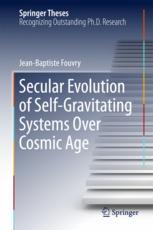

Most ebook files are in PDF format, so you can easily read them using various software such as Foxit Reader or directly on the Google Chrome browser.
Some ebook files are released by publishers in other formats such as .awz, .mobi, .epub, .fb2, etc. You may need to install specific software to read these formats on mobile/PC, such as Calibre.
Please read the tutorial at this link: https://ebookbell.com/faq
We offer FREE conversion to the popular formats you request; however, this may take some time. Therefore, right after payment, please email us, and we will try to provide the service as quickly as possible.
For some exceptional file formats or broken links (if any), please refrain from opening any disputes. Instead, email us first, and we will try to assist within a maximum of 6 hours.
EbookBell Team

0.0
0 reviewsTackling galactic evolution in a truly novel way, this outstanding thesis statistically explores the long-term evolution of galaxies, using recent theoretical breakthroughs that explicitly account for their self-gravity. While treating processes statistically, the astrophysical differences on each scale are also captured.
As the archetype of self-amplified diffusion, the implications of the thesis go far beyond astrophysics. Gravity is the driving force in galaxies, from their far outskirts to their innermost cores. These “extended kinetic theories” offer unique physical insights into the competing dynamical processes at play, complementing N-body approaches.
The thesis successfully gauges the role of nature and nurture in est
ablishing the galaxies’ observed properties, using kinetic equations to capture both sources of fluctuations. Further, it shows how secular diffusion shapes the phase space structure of cold stellar disks. The thesis subsequently determines the characteristic timescales and examines the signatures of secular evolution in this framework on two scales: from the kinetic evolution in galactic disks and their thickening via giant molecular clouds; all the way down to the stellar resonant relaxation of the central cluster and its black hole.